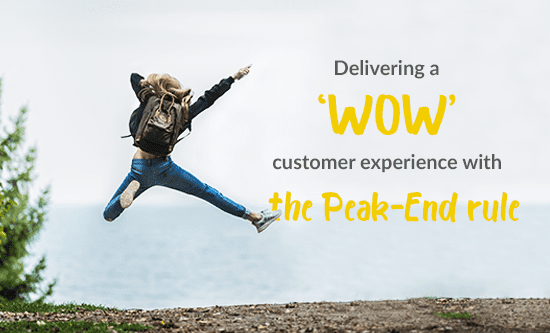Throughout our lives, each and every one of us will experience a number of significant life events. Whether it is graduating from university, getting married, or receiving a long sought-after promotion, we assume that every moment of these life-events will be etched in our memories forever. However, on the contrary, it is certain that regardless of the significance of the event, as humans we only retain a limited number of these moments in our memories. For example, leading up to a wedding, many brides and grooms spend huge amounts of time finessing their wedding plans to make sure their special day is absolutely perfect. From colour schemes to napkin designs and menu choices, the list of things to consider is endless. At the end of the day, however, it’s almost guaranteed that the couple will only remember the absolute highlights such as cutting the cake, saying their vows and walking down the aisle. This phenomenon is known as the ‘peak-end rule’.
First conceived by academics Kahneman & Tversky in 1999, the ‘peak-end rule’ refers to the notion that people are much more likely to remember something if it is a highlight (peak) or occurs at the beginning or the end of an event. Regardless of what else happens (good or bad), an individual’s overall impression will rest almost solely upon these moments. Since this idea was first established, marketers across the globe have utilised this psychology principle to influence customers’ experiences and decision-making. By creating experiences that peak and end positively, customers are much more likely to have fond memories and therefore become a repeat customer.
To deliver improved customer experiences, marketers must be able to leverage several underlying elements of the ‘peak-end rule’. These include:
- Attracting attention:
because we all lead busy lives, it is essential for marketers to make an impression right away. This can be done via the use of colours, humour, or catchy phrases. If successful, the peak-end rule can then be used to boost a customer’s overall positive experience. - Deliver as many peaks as possible:
it probably comes as no surprise that moments of intense pleasure will linger in our memories far longer than neutral ones. As such, the more intense the experiences that you can deliver, the more fond memories that customers will have to draw upon. For example, small gestures such as gifts, personalised notes or secret sales can all have a long-lasting impact on someone’s perception of your business. - Send customers off with a ‘bang’:
just as first impressions matter for getting your customer interested, their last interaction with you is equally important. It is crucial that they are left feeling satisfied, valued and positive – three critical elements for you to guarantee repeat business. This can be achieved in several ways including: reiterating that they are one of many satisfied customers (also referred to as social proof), wishing them a sincere goodbye, providing a small departure gift, or even offering them an incentive to come back.
Whether you are looking to expand your customer base or simply trying to engage better with your customers, the peak-end rule is an essential tool for businesses of all sizes. By re-doubling efforts for positive engagement at the beginning and end of the marketing process, your customers are more likely to remember their experience and return in the future.
In an increasingly crowded and competitive global market, generic messages and irrelevant offers will no longer be sufficient to engage customers. Instead, it is vital that marketers use technology as an enabler to scale their marketing efforts and create experiences that are enjoyable, memorable, and guaranteed to leave a long-lasting impression.
FOR MORE DETAILS ON HOW TO INTEGRATE PSYCHOLOGICAL TECHNIQUES WITH AI,CLICK HERE. ![]()
 By Helena Woo, Strategic Customer Engagement Director at DA.
By Helena Woo, Strategic Customer Engagement Director at DA.
With over 25 years of experience in data-driven marketing, she is constantly looking for ways to innovate, leading the strategic vision and value proposition for our clients. Helena has helped clients across industries achieve their marketing goals, marrying data and technology to deliver great customer experiences.
[pardot-form id=”46577″ title=”Blog Sign up test1″]



